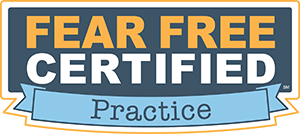Rehabilitation
The goal of rehabilitation is to optimize the quality of life of our patients, minimize pain and ultimately to return them to their original level of mobility. Rehabilitation and physical therapy is based on the biomechanics of the musculoskeletal and nervous systems and it is tailored to the individual needs of each patient. Rehabilitation is an excellent option for dogs and cats suffering from soft tissue and orthopedic injuries, arthritis, lameness, back and neck pain, and post-operative conditions. Physical therapy and rehabilitation will improve performance and function in canine athletes.
Canine Sports Medicine focuses on canine athletes involved in performance or working disciplines, or is just a very active dog. We are able to work with clients to develop strengthening and exercise plans for their athletes as well as diagnose and correct performance weakness or gait asymmetry. This is accomplished by conditioning, nutrition, physiology, injury prevention, diagnosis and treatment.
Our Sports Medicine and Rehabilitation Center has the following equipment/treatment options:
Canine Sports Medicine focuses on canine athletes involved in performance or working disciplines, or is just a very active dog. We are able to work with clients to develop strengthening and exercise plans for their athletes as well as diagnose and correct performance weakness or gait asymmetry. This is accomplished by conditioning, nutrition, physiology, injury prevention, diagnosis and treatment.
Our Sports Medicine and Rehabilitation Center has the following equipment/treatment options:
- Gait and Lameness Analysis
- Stance Analysis
- Thermal Imaging
- Musculoskeletal Diagnostic Ultrasound
- Neuromuscular/ Transcutaneous Electro-Stim
- Laser Therapy
- Pulse Electromagnetic Field Therapy
- Underwater Treadmill
- Hydrotherapy Pool
- Acupuncture and Electroacupuncture
- Regenerative Veterinary Medicine (Adult Stem Cell)
- Game Ready/Cryotherapy - Intermittent Pneumatic Pressure Therapy
- Canine Massage
- Back on Track
- Assisi Loop













